TeamViewer functions as a cross-platform remote desktop software application, which has the capability of connecting one remote user to another remote user’s machine to initiate application installation or make assistive system configurations.
You do not need to worry about any security breaches while using TeamViewer because one only gets access/control of a remote computer if that remote machine has TeamViewer installed and the user of that machine avails generated User ID and Passcode from this app.
Therefore, both remote computers need to have TeamViewer installed and configured for one user to have access control over another machine.
Thanks to TeamViewer, it is now possible to perform remote maintenance, troubleshooting, and configuration on remote machines whose users don’t have the needed technical prowess over such tasks.
Installing TeamViewer on Ubuntu
Your Ubuntu system needs to be up-to-date for it to be optimized for best performance.
$ sudo apt update && sudo apt upgrade -y
Next, head over to Teamviewer’s download page and grab the .deb package or use the following wget command to download the package directly in the terminal.
$ wget https://download.teamviewer.com/download/linux/teamviewer_amd64.deb
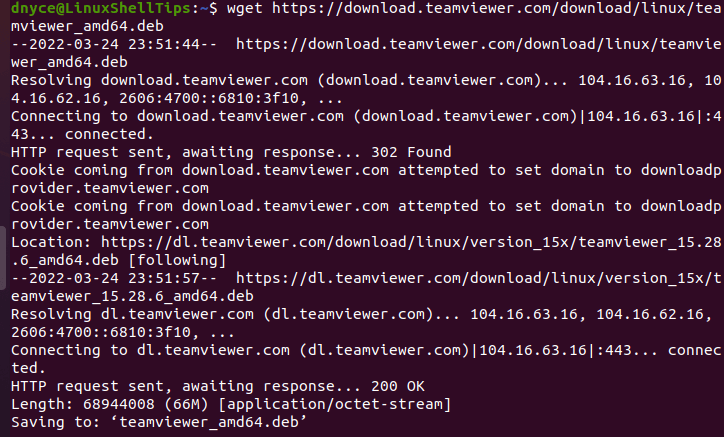
Now that we have the needed deb package for TeamViewer installation, we can proceed and execute the following command for the installation of TeamViewer on the Ubuntu machine.
$ sudo apt install ./teamviewer_amd64.deb
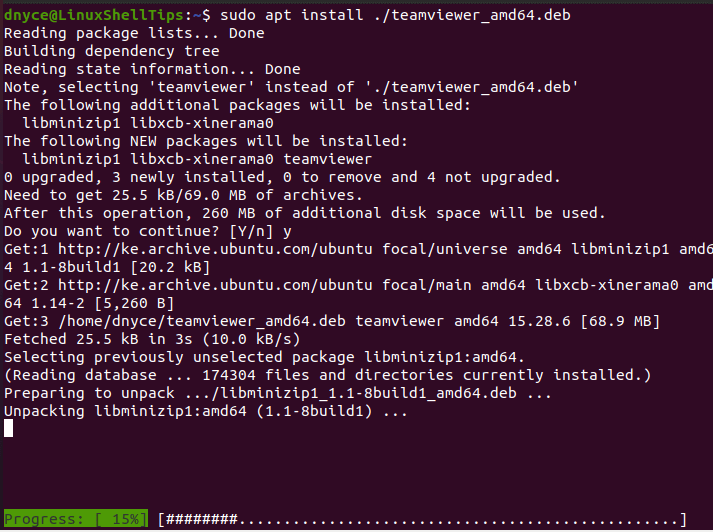
To launch TeamViewer, you can either initiate the App from Ubuntu’s Applications Menu or through the command line interface by executing the command teamviewer.
$ teamviewer
The initial TeamViewer screen will require you to accept its license agreement before clicking the continue button.
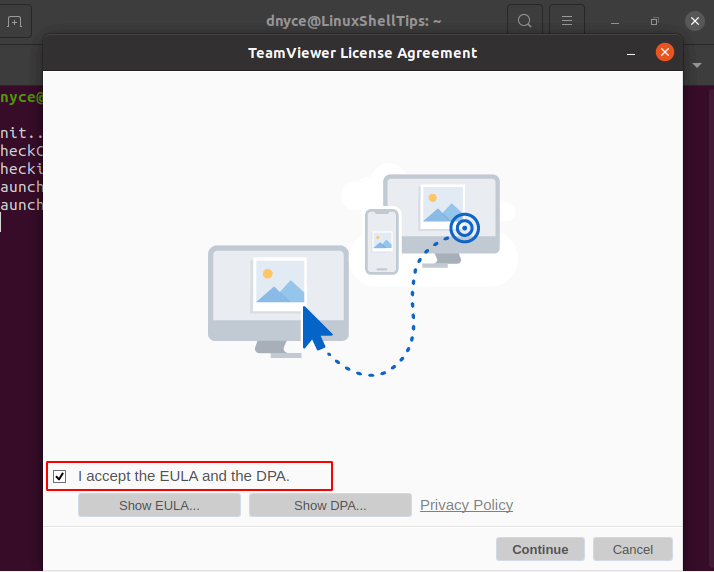
On the next screen, you will be presented with an interface that has Your ID and Password values. These values are needed when you need someone else to remotely have controlled access to the machine.
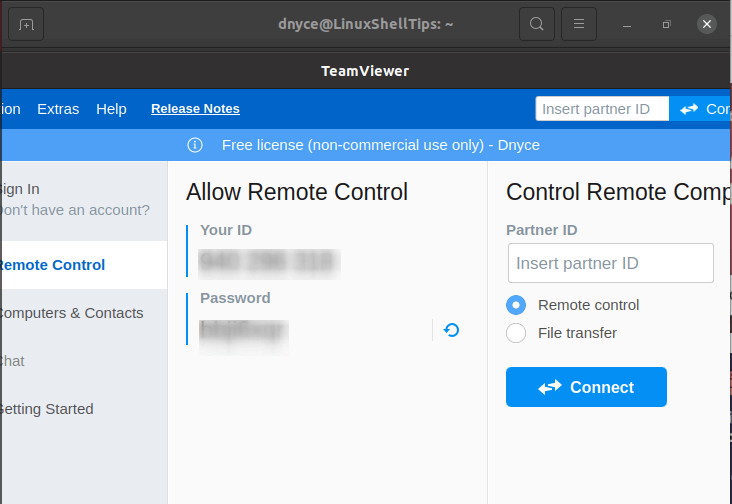
Testing TeamViewer Access to a Remote Linux Machine
Suppose you have another Ubuntu machine with TeamViewer installed and you need remote access to it to perform some configurations or maintenance.
You first need to identify Your ID and Password values on that remote machine. Then, key in the Your ID value as the Partner ID value on the machine you are currently using.
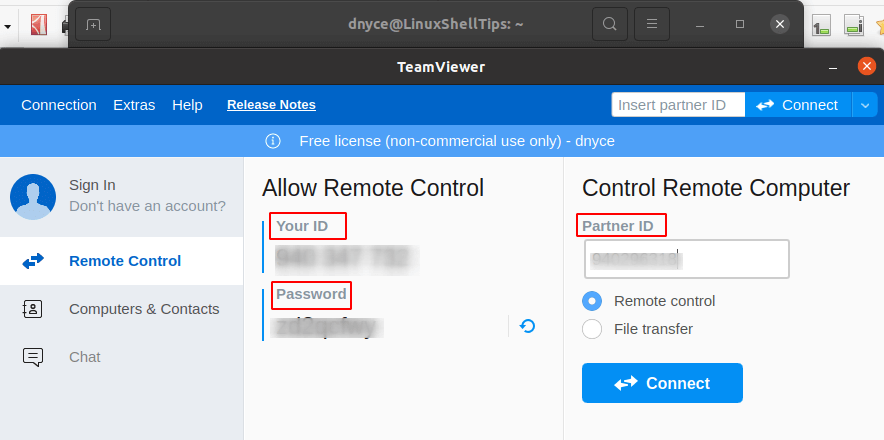
Click Connect, then you will then be prompted for the password associated with the Your ID (Partner ID) of that remote machine. Also, make sure you accept the connection request from the other machine.
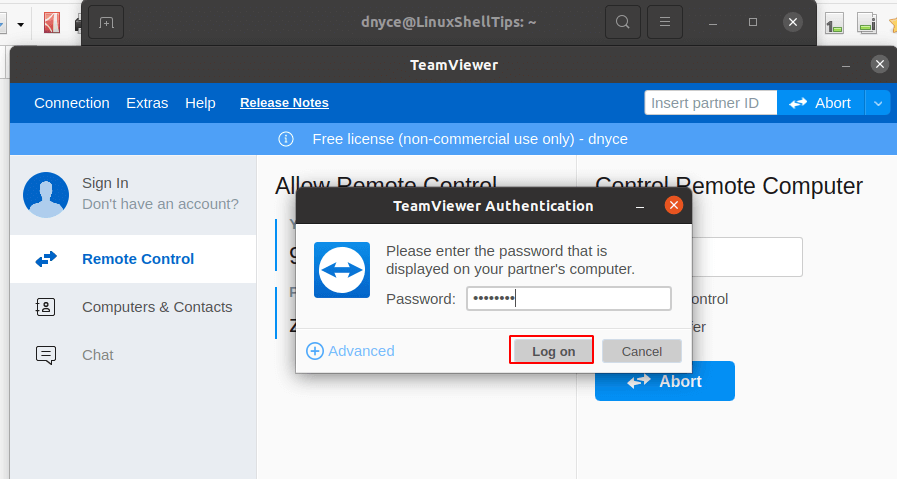
Click Log on.
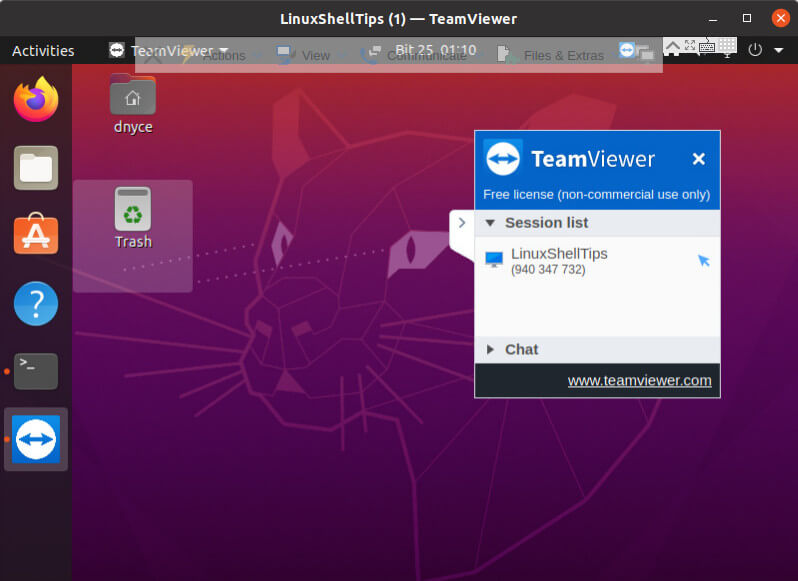
Under View, activate Show remote cursor to be able to move around the remote machine.
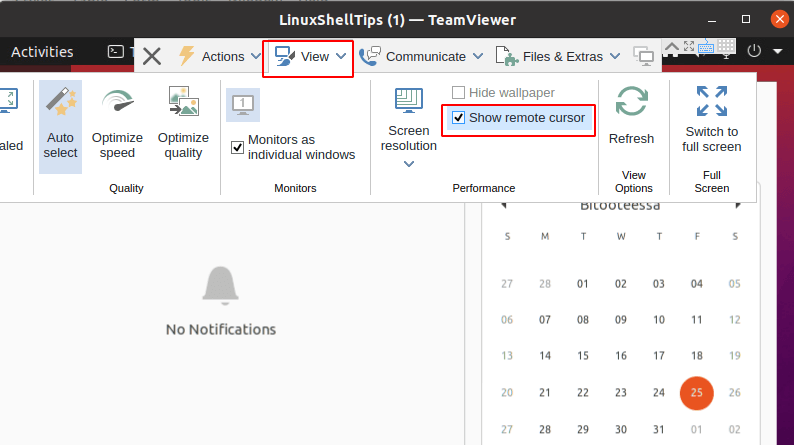
You now have full controlled access to a remote machine via TeamViewer.
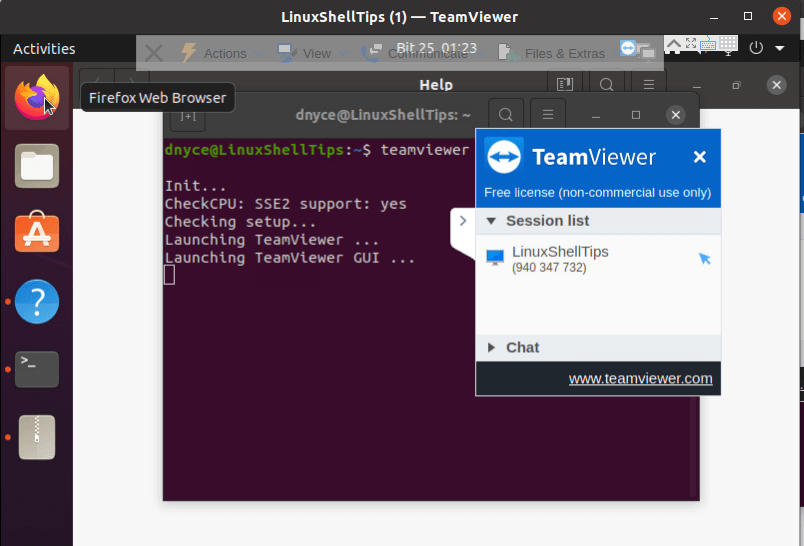
TeamViewer makes it flexibly easy to manage and transfer files between two remote Linux machines.
